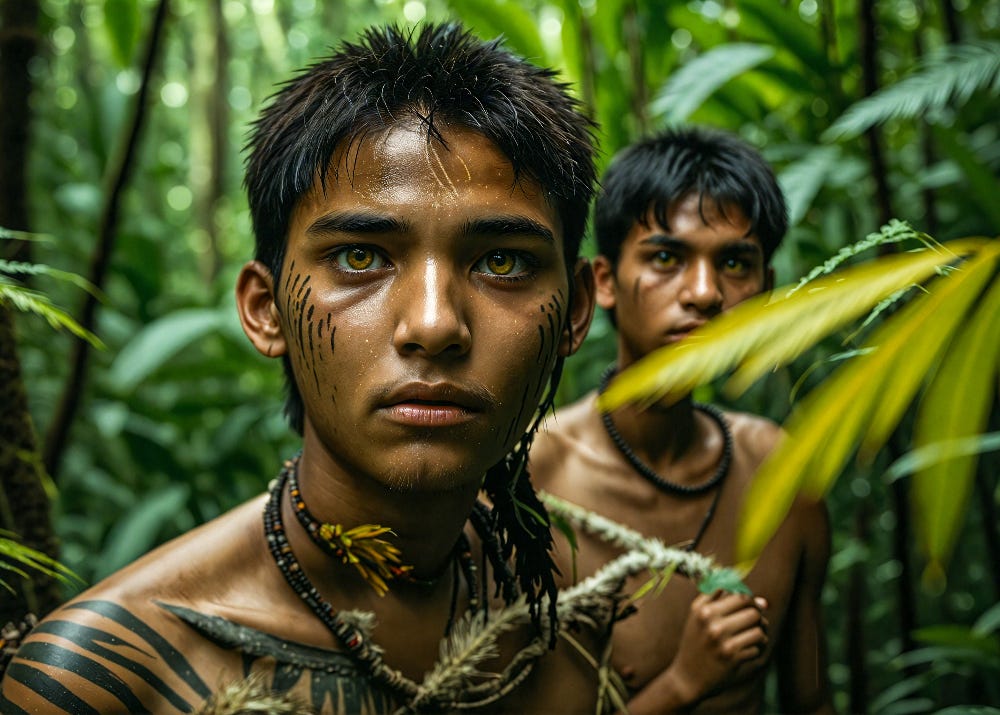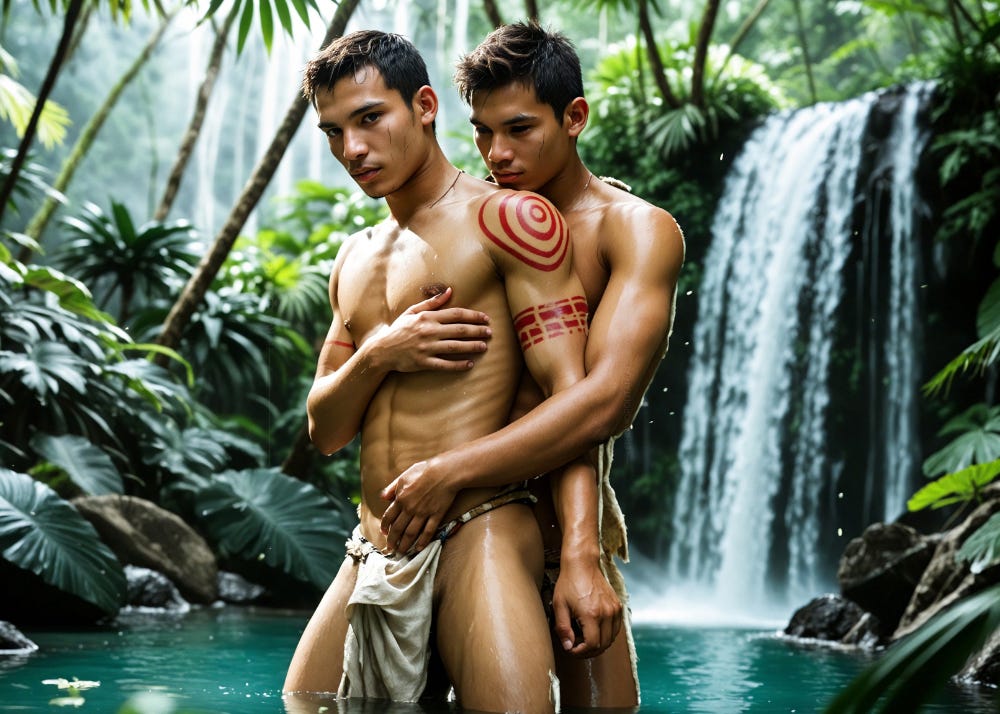This Amazonian Tribe's Homoerotic Rituals Transform Young Men Into Warriors
Dive into the fascinating world of Yanomami culture—exploring their communal rituals, potential homoerotic customs, and how Western concepts of sexuality differ from Amazonian perspectives.
Deep in the lush, untamed Amazon, the Yanomami people have been fascinating anthropologists’ minds for decades. Sure, they’re famous for their intricate shamanic practices and communal homes called shabonos. But when you take a closer look (and trust us, some researchers really looked close), and you’ll find accounts hinting at same-gender sexual relationships that blend ritual, spiritual belief, and queer communal bonding.
Meet the Yanomami Tribe
The Yanomami live straddling the Brazil-Venezuela border, in villages often centered around a huge circular dwelling. They garden, fish, hunt, and—when the mood strikes—host multi-day celebrations that include feasts and fun. Western ideas like “gay,” “straight,” or “bi” don’t exactly map neatly onto Yanomami culture. Instead, think of sexuality here as part of a bigger cultural tapestry, where physical affection can mean social bonding, an exchange of spiritual synergy, or both.
Homoerotic Festivies and Rituals
Imagine you’ve just arrived at a massive Yanomami gathering. There’s dancing, chanting, and everyone’s feasting on plantains and maybe a little fermented beverage. As dusk deepens, the villagers get playful, and sometimes downright horny. Researchers have described scenes where men fondle or tease each other, kind of like the “locker room banter” of the rainforest—only cranked up to 11.
This group horseplay can involve a quick grope or some spirited frolicking that outsiders would label “homoerotic.” But in the Yanomami view, it’s often just part of the communal vibe. It’s celebration, social glue, and maybe a way to let off steam after hunting or gardening under the hot Amazonian sun.
Warrior Fellatio: An Energy Exchange?
Among the most eyebrow-raising claims in older anthropological texts is that some Yanomami warriors might receive oral stimulation from younger men—allegedly to channel the older man’s spiritual prowess or “energy.” Picture it: the mighty warrior, respected for his hunting skills or shamanic knowledge, and an eager young acolyte, hoping to soak up some of that warrior energy. Western onlookers might say, “That’s queer sex!” The Yanomami, however, might see it as a ritual bond, a sacred handshake with a little extra flair.
Are these stories overblown by sensationalist outsiders? Possibly. Anthropologists like Jacques Lizot have written about it, but he and others have faced criticism for how they conducted their research. Still, the lore persists, and it’s certainly one of the more colorful chapters in Amazonian ethnography.
Rubbing, Riding, and Other Ritual Intrigues
When the celebrations really heat up—or during certain shamanic rites—there are also stories of men rubbing thighs together (intercrural contact) and, in very rare references, full-on anal intercourse. These acts may be woven into communal ceremonies, where spiritual energy swirls, everyone’s chanting, and boundaries get a little blurry. For the Yanomami, it can be a part of pleasing the spirit world or forging unbreakable social bonds.
But before you imagine a rave in the jungle, keep in mind that these behaviors vary wildly between villages. One community wholly embrace what Westerners would consider queer sex, while another could be far more reserved, especially if missionaries have left their prudish footprints behind.
Beyond “Gay” and “Straight”
Unlike the Western world, the Yanomami don’t typically box people into sexual identity categories. You might see two men fooling around during a week-long feast, only to see them happily father children and have wives. It’s simply not a contradiction in Yanomami culture. That’s the beauty of a worldview where spiritual strength, communal harmony, and physical affection intersect in ways that would blow up most Western dating apps.
Of Missionaries and Modern Influences
Let’s not forget: the Yanomami haven’t lived in a bubble. Christian missionaries have swept in, clutching their Bibles (and pearls) at what they considered “sinful” behavior. Government officials and NGOs have introduced Western norms, sometimes shaming or outlawing certain customs. So if you were to zipline into a Yanomami village today, you might find these famed same-gender practices are more hush-hush—or changed altogether.
Why It Matters to the Queer Community (and Beyond)
At first glance, these Amazonian rites might sound shocking or even exoticized. But they underscore a deeper point: cultures worldwide have always had diverse ways of expressing sexuality, intimacy, and communal bonding. The Yanomami show us that sex isn’t just about orientation or romance; sometimes, it’s about ritual, spiritual synergy, and forging social cohesion. As we piece together a more inclusive history of humanity’s sexual tapestry, it’s crucial to remember how fluid and context-driven these practices can be.
The Yanomami are far more than just “that tribe with the wild feast scenes.” They’ve navigated threats from gold miners, missionaries, and diseases introduced by outsiders. Their spiritual worldview, ecological wisdom, and communal living arrangements are as sophisticated as they are mesmerizing. Yes, some anthropologists have caught glimpses of steamy same-gender antics, and yes, they’ve left us pretty intrigued. But let’s also celebrate the bigger message: love, desire, ritual, and community all braid together in ways that defy neat labeling.








This was documented in the 70s by Tobias Schlieman (sp) He was a openly gay man and not an anthropologist. There is a book ,"Keep the river on your right". Where he describes the life of the Yanomami particularly his interaction with the men. Its a good read. You can probably find it used.
I instinctively believe this is how it was, and may still be, in pure cultures